View current page
...more recent posts
Lux Provocateur TM soap commercial [.mp4 movie]. Not American TV-safe, according to cartoon brew. Girl discovers bar of soap in woods, turns into Steve Madden model. Illustrates the theories of Camille Paglia "in the field," as it were. Note aroused forest animals, and leather dude at end. (via schwarz)
Happy Thanksgiving to all, by the way.
Digital Pog Criticism (aka "pog bloggin'")
Some thoughts on Michael Bell-Smith's digital pog collection. Briefly, pogs started as illustrated milk bottle caps in Hawaii and grew into a kid-collectibles crazelet in the '90s. Digital pogs are 177-pixels-in-diameter GIF files that exist and can be "bartered" mainly via the Internet and web browsers. Whether Bell-Smith's pogs catch on and actually become viable mock-nostalgic anti-commodities remains to be seen.
As Bill Schwarz said when a few of these were first posted: the pog "is the low man on the collectible ladder. Lower than beer cans, lower than glass insulators, lower than advertising drink glasses, lower than everything. Congrats to mbs on recognizing a commodity that faint."
Whatever happens with them in the Internet's gift-exchange economy, these pogs are interesting to think of as a different kind of icon model. If you look at avatars dredged up by something like the LiveJournal icon-scraper they're all rectangular. Talk about "conventional"!
As an artist, working with the circular format makes you think about different content issues--what kind of subject matter lends itself best to this form? (Cameos for portraits, views through viewfinders and portholes, puns on circular imagery, etc.)
Down side: they require more steps to make than rectangles. Also, not every viewing situation respects the GIF's command to "transparencize" the area outside the circle--if that doesn't happen, the effect is blown.
Update: the above comments address the collectible aspect of pogs. Of course in the physical world their main purpose, and means of exchange, is a game where the pogs are stacked and knocked over, with the pogs landing face up going to the winner. Some serious thought needs to be given to how digital pogs can acquire the edge of competition, gambling, and class disruption that led to their banishment in schools across America in '94-'95.
Dear Tom, We are continuing to monitor your site for signs of Buzz. You often seem close to achieving a "buzz breakthrough," but you have a number of self-defeating elements built into your program. You don't stick to one topic, you are frequently harsh in your opinions, the mix you are attempting of art world insider theorizing and political rants seems ill-conceived, your own art is inconsistent, your music occupies an uncomfortable ground between club tunes and art music, satisfying neither constituency, and your alternating tone of outraged moral seriousness and adolescent silliness is frankly just a turnoff. We'd like to help you along with your BQ (buzz quotient) but, frankly, we don't know what the f*k you're doing and we don't care.
Update: last year's "memo from the suits"


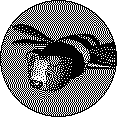
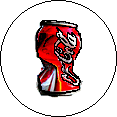

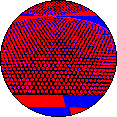
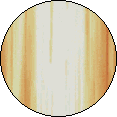
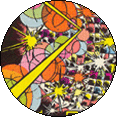

Digital Pogs from the collection of Michael Bell-Smith. T to b, l to r: Matt Smear, Michael Bell-Smith, Jeff Sisson, John Michael Boling, Paper Rad, Matt Smear, Michael Bell-Smith, Sarafina Engfer (2). The ones below are all by me, except the blond "parade lady" which is my pog of a Thorrific photo.
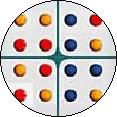

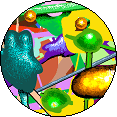

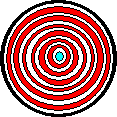

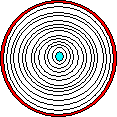
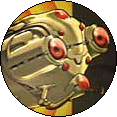
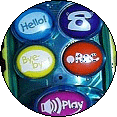
More YouTube Sequencer Demos
Fairlight CMI Sequencer (vintage digital interface on early sampler! I like the sound, graphics, and keyboard clicks in this Japanese subtitled video)
Korg Radias-R Demo ("state of the art" digital signal processing is kind of cheesy but placidly filmed and fun to watch)
Roland System 100-M (demo in Japanese of pattern-creation on modular analog synth)
Below: two recent "found street sign" photos from Curbed. The top one is from the Gowanus canal area, where they really are building a Whole Foods. The bottom one is from wherever Beavis and Butthead live.

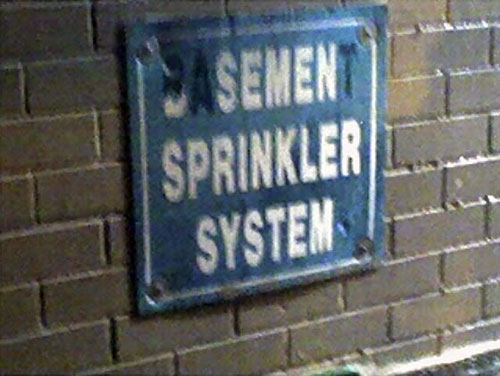
Dear Music Diary,
Last night I decided to fix a glitch in the string quartet piece I wrote last February. It has been bugging me all these months. Turns out it was one discordant violin note that needed to be muted.
We are a 2-PC family here at the studio. The quartet was produced on my laptop using (among other things) the Kontakt sampler, version 2.0. I have since installed a later version of Kontakt (2.1) on my desktop PC and wanted to do the fix on that computer. All the instruments worked fine except the cello, which produced no sound.
Turns out that the cello was "improved" in version 2.1 so that you can play in different styles--sustained, plucked, etc. So I substituted the new cello for the old one, and tried all the styles to find the closest one to 2.0.
None matched. In fact, the sound was loud and awkward and didn't obey the volume parameters I'd set down for each instrument. The balance of the instruments was destroyed.
My options then were: (i) try to massage the new cello so that it fit with the other instruments, (ii) uninstall version 2.1 and use the backup version of 2.0 (making songs produced in 2.1 unplayable) or (iii) just make the fix in 2.0 on the laptop. I chose (iii).
But if I only had one PC and had upgraded to 2.1 I would have been f*ed out of several hours of my life. If I was a professional soundtrack composer this would be a serious annoyance.
This is not a complaint about Kontakt or Native Instruments per se. The issue applies to all commercial software. The capitalist business model requires (a) constantly rolling out "improvements" in product lines and (b) creating anxiety in customers that they need these improvements. The resulting tangle of compatibility issues assures that creative work (or any work) with digital tools is a chaotic mess.
The great thing about being a romantic starving-in-a-garret type artist (as opposed to a for-hire illustrator or composer) is at any point you can choose to jump off the treadmill. Or use the industry dysfunction proactively, as content. I work in a paint program that's about 15 years old now and I'm not feeling the urge to acquire any new music software. My beginner version of Cubase dates to early 2004 but I'm still learning new tricks with it, even though Steinberg has introduced a couple of versions since then. In my latest piece I used Kontakt 1.5, which I found pleasant, like driving around a stripped-down dune buggy and leaving the Hummer in the garage (if I had either of those vehicles).
Blogs and other linkage:
Jim Woodring's blog. How art should be--artists make art and post it, whoever likes it finds and consumes it. In this case, lovingly crafted, f*ed up surrealist drawing and painting by a master from the underground comix sphere.
Across the divide. Edward B. Rackley reporting from Africa, offering "critique from within the international aid industry [and] political commentary from a number of African countries." A recent post on the African-Chinese trade bonds intrigues.
Seminal, sub-nugatory New York band Neg-Fi composes theme song for this year's installment of La Superette, "where artists showcase original, handmade gifts including recycled accessories, multifunctional stuffed animals, artist publications, funky house wares, and homemade clothes, with a special focus on 'hacks,' the custom configuration of pre-existing hardware or software." Neg-Fi's contribution this year will be "a mini-cd EP packaged with a jar of homemade organic peanut butter."
Nasty Nets internet surfing club is a page I'm proud to be involved with (mostly with the occasional bad animated GIF)--a mix of discriminating smartass net-trolling and original art projects for the web, with an emphasis on askance looks at the popular web technologies bubbling up from Silicon Valley that help us live, love, communicate, and work better.
Mellon Writes Again. Web page of writer Mark Mellon, whose fiction spans a range of genres and who lists his credits thusly: "My work has appeared in Aberrations; Chasm; Gothic.Net; Terra Incognita; Anthrolations, the Magazine of Anthropomorphic Dramatic Fiction; the Irish magazine Albedo One; Black Satellite; City Morgue; Aoife’s Kiss; Zahir; Hadrosaur Tales; the English magazines Sutekh’s Gift and Premonitions; and Whispers From The Shattered Forum. A vampire story, Shtriga’s Kiss, has been published in chapbook form by Anxiety Publications. I have also written four novels, The Empire of the Green, Hammer and Skull, The Pirooters and Libertarian in Love (respectively a science fiction novel, a historical novel about World War II, a Western, and a contemporary satire), and a fantasy novella: Escape From Byzantium."
